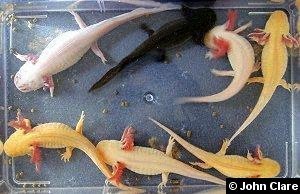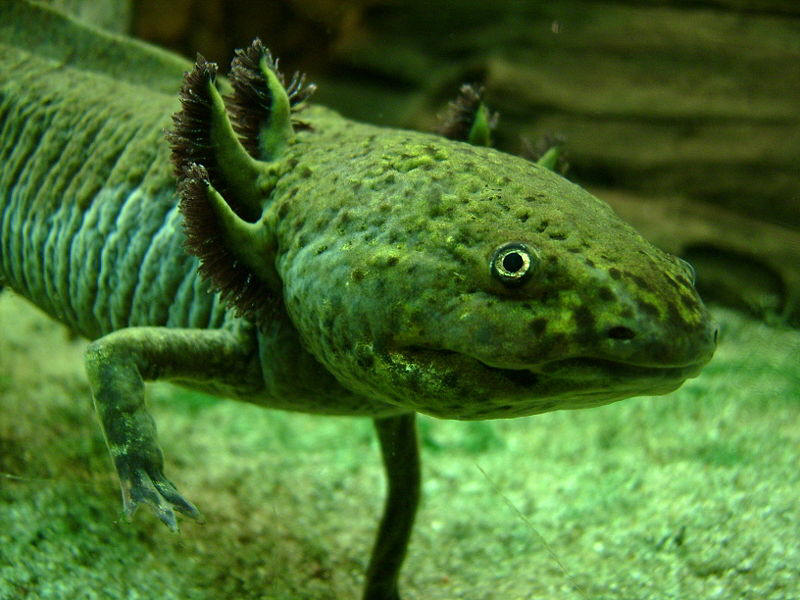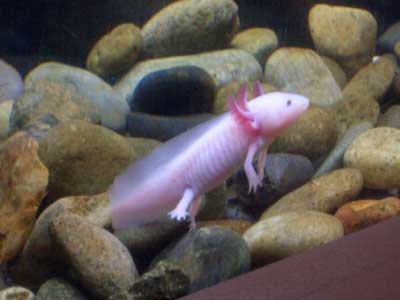The fishy "tail" of the axolotls![[The name of referred object is 1471-2148-7-180-1.jpg] Regeneration of a limb, 2007 Villiard et al; licensee BioMed Central Ltd.](http://www.pubmedcentral.nih.gov/picrender.fcgi?artid=2072957&blobname=1471-2148-7-180-1.jpg)
One of the Axolotls unique adaptation is the capability of regenerating lost body parts. These amphibians have found a special role in scientific and medical facilities for studies involving regeneration.
Unlike most salamanders, axolotls do not leave the water. Breathing takes place through the skin and three feathery gill structures that are located on either side of the head. If an axolotls spends long periods of time in shallow water, their gills may be absorbed and they can begin using their lungs on land. However, if Axolotls are in deep water, they will keep their gills.
Axolotls have also had to adapt their means of transportation because of their aquatic life. By a process called neoteny, the inability to metamorphosize from larva to an adult, the Axolotls is able to retain its larval tail. This, along with having four limbs, improves mobility.
Other
adaptations have come due to a mutation in
the pigment gene of the
Axolotls.
Due to this mutation a variety of colors and patterns can be seen in captivity
such as grey, brown, golden albino, white albino and black (wild-type).
This mutation is another reason why scientists are using the Axolotls as a model
organism. Other model organims include Drosophila melanogaster,
Saccharomyces
cerevisiae, and
Escherichia coli.
the
Axolotls.
Due to this mutation a variety of colors and patterns can be seen in captivity
such as grey, brown, golden albino, white albino and black (wild-type).
This mutation is another reason why scientists are using the Axolotls as a model
organism. Other model organims include Drosophila melanogaster,
Saccharomyces
cerevisiae, and
Escherichia coli.


